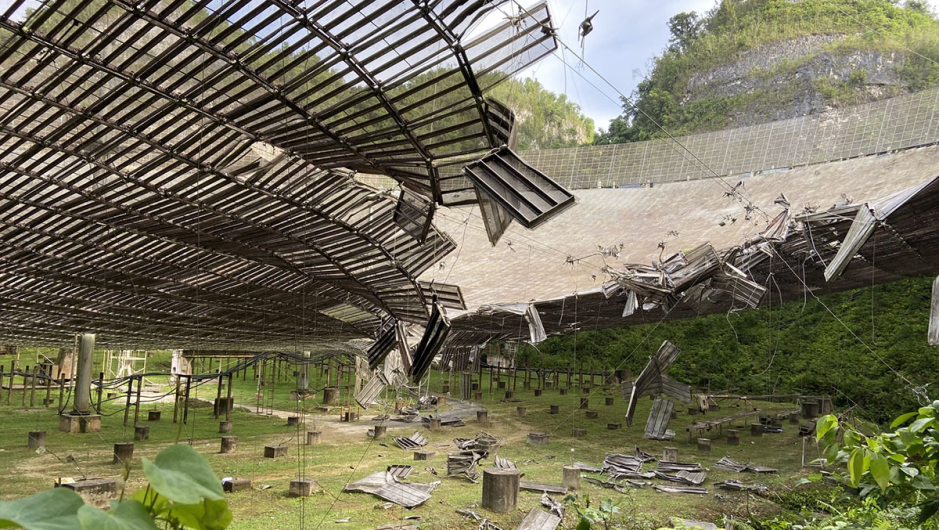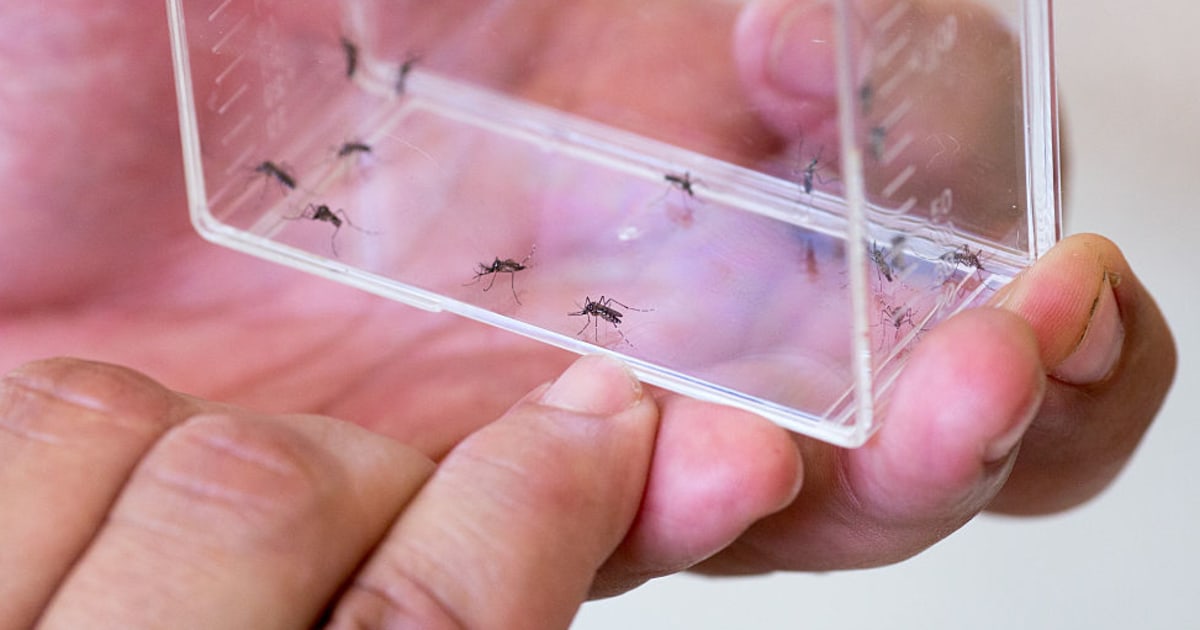(CNN Spanish) –– One of the auxiliary cables that help to support the metal platform suspended over the gigantic Arecibo Observatory, in the north of Puerto Rico, broke this Monday causing a cut of about 30 meters long in the reflector plate the telescope, the observatory administration reported.
The accident occurred around 2:45 am local time, when the 7.6-centimeter-thick cable fell, damaging some eight panels of the Gregorian dome and twisting the platform used to access it. It is not yet known what caused the cable to break.
The facility, which is part of the National Science Foundation, will remain closed while engineers review the damage and assess the repairs necessary to get the telescope back into operation.
"We have a team of experts evaluating the situation," said Francisco Córdova, director of the Arecibo Observatory. "We are focused on ensuring the safety of our staff, protecting facilities and equipment, and restoring facilities to full performance as soon as possible, to return to the service of scientists around the world," he added.
The facility stands out for being one of the largest in the world. The diameter of its main antenna is 305 meters, made up of 40,000 perforated aluminum panels.
The Central Florida University manages the facilities of the National Science Foundation under a cooperative agreement with Ana G. Méndez University and Yang Enterprises, Inc. The facility, which houses one of the most powerful radio telescopes on the planet, is used by scientists to conduct research in the areas of atmospheric sciences, planetary sciences, radio astronomy, and radar astronomy.
The radio telescope facilities are the basis of a team that directs the Planetary Radar Project, supported by the Near-Earth Object Observations Program of the National Aeronautics and Space Administration.
The facility has faced hurricanes, tropical storms and earthquakes since it was built 50 years ago. Repairs for the damage caused by Hurricane Maria in September 2017 are ongoing. The facility has continued to contribute to major advances in space research in gravitational waves, asteroid characterization, and planetary exploration.
Accident









